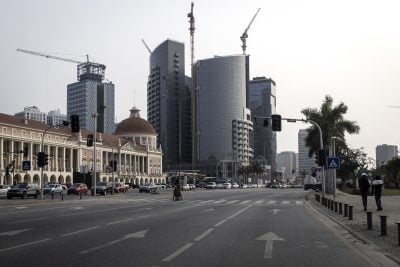Mozambique is rapidly emerging as the most important new global gas supplier for several years. The biggest finds have been made over the past two years by a consortium led by Anadarko Petroleum Corporation of the US in deepwater close to the Rovuma Basin in the far north and on the border with Tanzania.
The consortium comprises Anadarko (36%), Mitsui E&P (20%), BPRL Ventures Mozambique (10%), Videocon Mozambique Rovuma (10%) and Cove Energy Mozambique Rovuma Offshore (8.5%), while state-owned Empresa Nacional de Hidrocarbonetos (ENH) has an option to take a 15% stake at a later stage. Mid May,it announced that its Golfinho well had discovered recoverable gas reserves of more than 7 trillion cubic feet (tcf) and possibly more than 20tcf. It is located 30km northwest of its newly named Prosperidade find, which may have recoverable reserves exceeding 30 tcf. It is particularly interesting that the new find lies in geologically different structures to Prosperidade, opening up a range of new exploration possibilities in the area.
Such volumes are large by international standards. The scale of the Rovuma finds is underlined by the fact that Shell launched a $1.8bn takeover bid for Cove in April, based on its 8.5% stake in the project. Shell’s inclusion should provide the financial muscle and technical expertise to enable the development of a liquefied natural gas (LNG) plant.
There are currently no LNG producers in Eastern Africa but Mozambique would be well placed to export LNG across the Indian Ocean to large and growing markets in Japan, South Korea, China, Taiwan and India.
The figures vary from project to project but as a rule of thumb, it is reasonable to estimate that 5 tcf of natural gas reserves are required to supply a typical LNG production line, known as a train, to produce 4m tonnes a year for at least 20 years. Production trains are not built without sufficient proven reserves in place. Mozambique should therefore have sufficient gas to supply several trains.
Other gas discoveries have been made elsewhere in the Rovuma Basin, including by Eni of Italy. Mozambique now has the second-biggest proven gas reserves of any country in sub-Saharan Africa, after Nigeria, and ahead of the region’s other two LNG producers, Angola and Equatorial Guinea.
The government appears to be pleased about Shell’s approach for Cove. When asked about the development of an LNG plant, President Armando Guebuza said: “Our vision is to turn our mineral resources into a driving force for social transformation. We want Shell to develop profits for shareholders but above all, we want to ensure these benefits help all the people of Mozambique.”
Domestic supplies
The national economy should also benefit through job creation and gas supplies for power generation and other industrial uses. A gas production, transmission and distribution grid is already emerging in the south of the country, where South African firm Sasol operates the Pande and Temane fields.
Although the local market originally accounted for just 5% of total production, a growing proportion of output is marketed locally, mainly by Matola Gas Company (MGC). The South African firm is increasing its output by 50% to 183m gigajoules a year, of which 31m gigajoules a year will now be marketed inside Mozambique. Apart from the industrial town of Matola, which lies just outside Maputo, the gas network is being extended into Maputo itself.
In mid-May, the minister of mining resources, Esperança Bias, revealed that the government is planning to offer new acreage for coal, oil and gas licences in the near future in the hope of making further discoveries.
Further discoveries have the potential to revolutionise the national economy. It would be no surprise to see Mozambique approaching the African continental average for GDP per capita within a decade. Whether such growth can feed down to benefit the bulk of the population depends on national economic policy. Yet Maputo’s track record to date gives plenty of room for optimism.
Want to continue reading? Subscribe today.
You've read all your free articles for this month! Subscribe now to enjoy full access to our content.
Digital Monthly
£8.00 / month
Receive full unlimited access to our articles, opinions, podcasts and more.
Digital Yearly
£70.00 / year
Our best value offer - save £26 and gain access to all of our digital content for an entire year!

 Sign in with Google
Sign in with Google 




